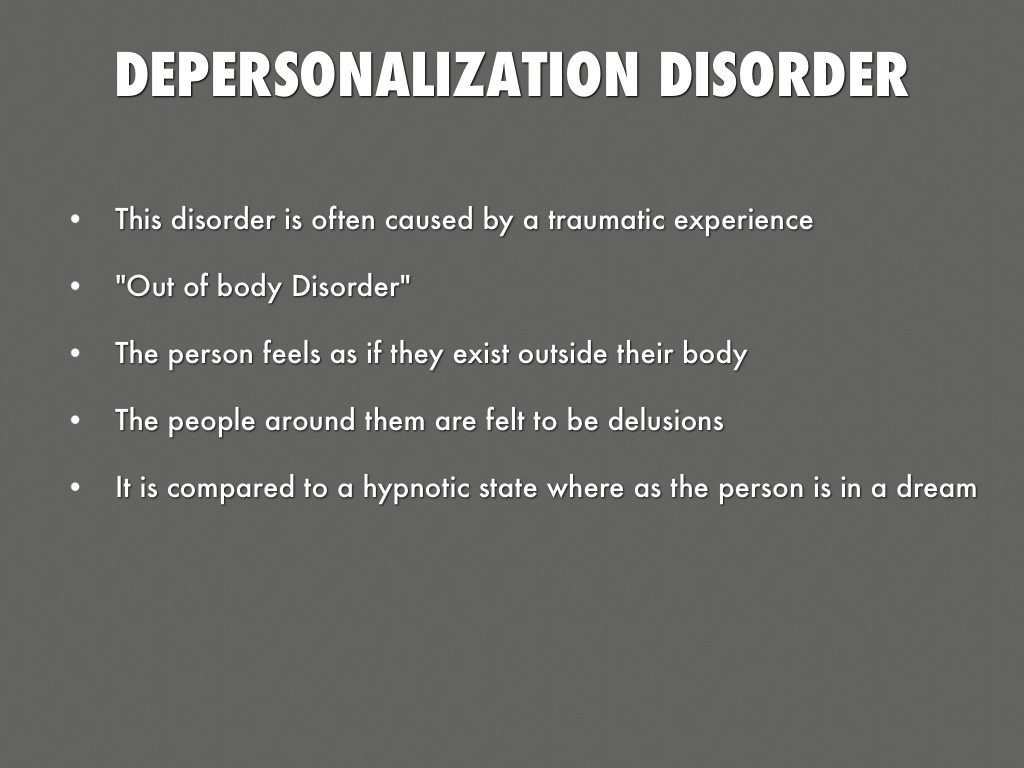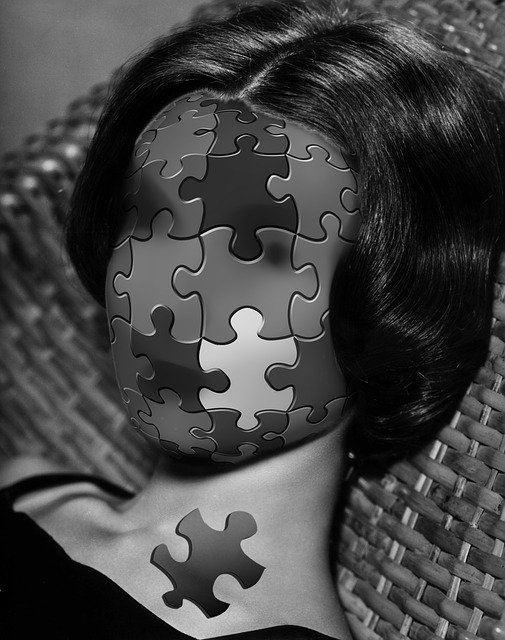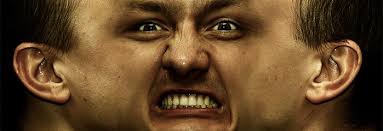
Those who experience prolonged symptoms may have cannabis-induced depersonalization-derealization disorder ( 2, 10). However, among a subgroup of persons who use cannabis, symptoms of depersonalization or derealization persist for weeks, months, or years ( 3, 5), even after discontinuation of the substance ( 2, 11).


In general, cannabis-induced symptoms of depersonalization and derealization are time-locked to the period of intoxication, peaking approximately 30 minutes after ingestion and subsiding within 120 minutes of exposure to the drug ( 12, 13). However, depersonalization and derealization remain potential side effects of cannabis ( 12), of which many clinicians are unaware ( 5). Some individuals who use cannabis will never experience depersonalization or derealization during or after cannabis use ( 5). Here, we examine data on prolonged experiences of depersonalization and derealization following cannabis use to provide insight into the clinical features of and risk factors for cannabis-induced depersonalization-derealization disorder. However, this type of dissociative disorder is not typically addressed in contemporary reviews focusing on the implications of cannabis use ( 2). A cognitive model suggests that those predisposed to anxiety may develop fears regarding episodes of depersonalization and derealization (e.g., fear of "going mad"), which may contribute to the emergence of the symptoms following panic attacks or substance intoxication ( 9).Ĭannabis-induced depersonalization-derealization disorder has been described in the literature for many years ( 10, 11). Although depersonalization and derealization symptoms may occur as part of a panic attack ( 5), persons with depersonalization-derealization disorder continue to experience symptoms following resolution of the panic attack ( 3). The most common psychoactive drug precipitant of the disorder is cannabis ( 3, 5). Several precipitants have been implicated in depersonalization-derealization disorder, including panic attacks ( 3) and recreational drugs ( 5). Personality disorders do not appear to predict symptom severity ( 8). However, it is uncommon for an individual with depersonalization-derealization disorder to have schizotypal or schizoid personality disorder ( 8). Persons with the disorder may present with comorbid psychiatric disorders, including personality disorders ( 8). The average age at onset is 16 years ( 8), and women and men are equally affected ( 5). The lifetime prevalence of depersonalization-derealization disorder is approximately 2% both in the United States and worldwide ( 4). Persons with depersonalization-derealization do not appear to be at risk for developing psychotic disorders ( 2, 3). Whereas an individual with schizophrenia may believe that he or she is actually outside of his or her body, persons with depersonalization-derealization are aware that the dissociation is merely an uncanny sensation ( 5). However, persons with depersonalization-derealization are distinguished from those with psychotic disorders by the presence of intact reality testing regarding the dissociative disturbance ( 4).

Transient episodes of depersonalization or derealization have been known to occur across a broad range of psychiatric disorders, including schizophrenia ( 7). Both symptoms may be a cause of significant distress and functional impairment ( 4– 6). Derealization is marked by feelings of unreality and detachment from one's surroundings ( 4), such that one's environment is experienced as remote or unfamiliar ( 5). Depersonalization is a dissociative symptom in which one feels like an outside observer with respect to one's thoughts, body, and sensations ( 3). The principal clinical features of depersonalization-derealization disorder are persistent or recurrent experiences of depersonalization or derealization ( 4). Moreover, there is a dearth of literature on the clinical characteristics of and risk factors for depersonalization-derealization disorder as precipitated by cannabis use ( 3). However, little is known about how cannabis use relates to other psychiatric sequelae ( 2). An association between cannabis use and the emergence of psychotic disorders among susceptible individuals is increasingly being described in the medical literature ( 1).


 0 kommentar(er)
0 kommentar(er)
